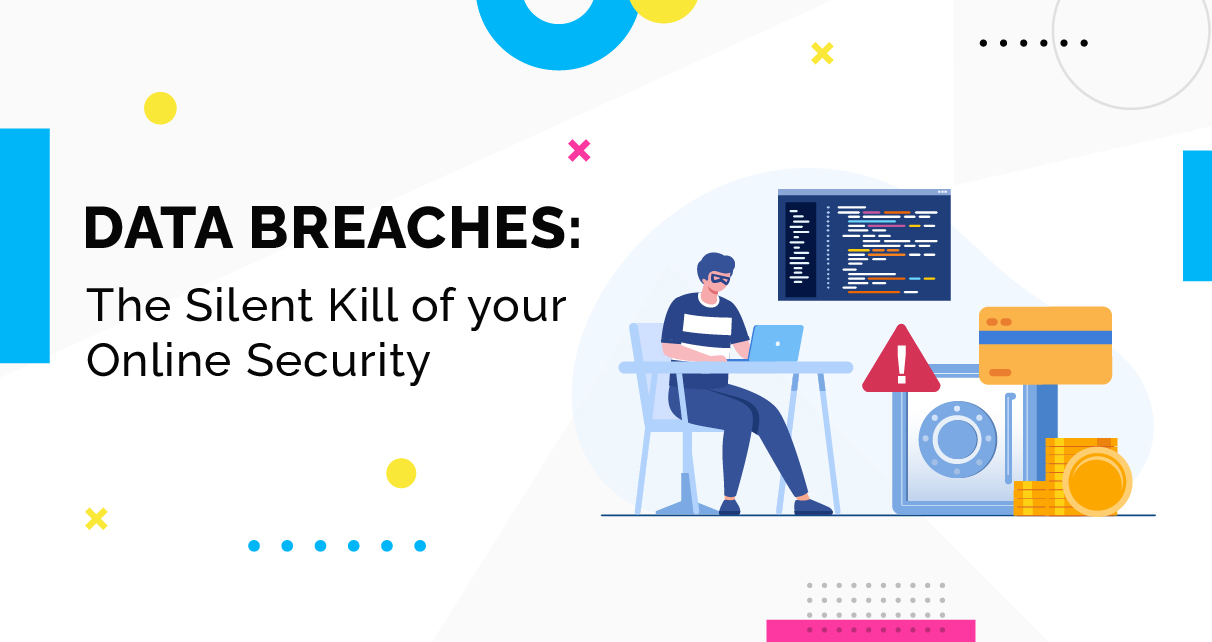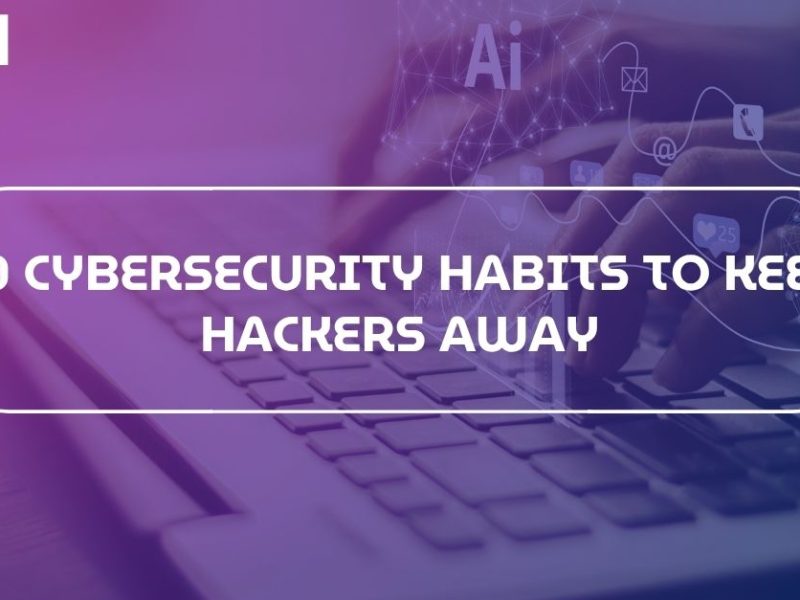
What is a Data Breach, and how can it be combated?
Terror not only comes from gunshots and physical crime. These days, online crime is giving humans a big-time terror attack. Have you encountered any such? So, many of you must have, and so many must still be, safe from online terror, which, in fact, is very good. But you need to be cautious. One such online terror that is giving businesses, governments, and individuals a big-time terror attack is called Data Breach or Data Leak.
A little lack of precaution can lead to unexpected results, leading to sensitive information leakage. Whether you are online or offline, hackers are way more intelligent and can access you through the internet, text messages, Bluetooth, or any online service you use.
A few years back, there was news that Bluetooth connection used to flash on victims’ mobile, and upon clicking, it led to account hacking.
According to CyberProof research, India ranks 4th among the top 10 biggest cybersecurity threat-facing countries in the world, with 5.33%.
A recent event in May 2024 took the Indian government in shock when the military and police personnel’s sensitive data, including facial scans and fingerprints, along with names and addresses, were leaked.
In a study conducted by IBM revealed that Data breaches cost an average of nearly $4 million globally. These data are scary and need the utmost attention.
What are Data Breaches?
Data breaches typically contain financial facts like bank account or credit score card details, identifiable facts (PII), covered fitness records (PHI), intellectual property, or change secrets and techniques. Other terms for statistics breaches include cloud leak, unintended information disclosure, facts leakage, information leak, or records spill. Cyber threats, cyber risks, and ransomware breaches engineered by way of bad actors and cybercriminals are threatening the cybersecurity landscape, leading to an increase in cyber incidents and the cost of cybercrime.
The average cost of a Data Breach in 2022 was $4.35 million, and it impacted nearly 294 million people. In another survey conducted by IBM, the cost of a data breach reached $4.2 million in 2023. According to projections, by 2025, cybercrime is estimated to increase globally by 15% annually, summing up to a $10.5 trillion cost.
How do Data Breaches happen?
But why do these data breaches even happen? The common assumption is that they happen because of an external player, but this is not true in every case. The reasons for data breaches can be traced back to intentional attacks, simply a flaw in the company’s infrastructure or an oversight by an individual. Let’s delve into how actually these data breaches happen:
- An Accidental Insider: Let me explain using an example: imagine a worker using his co-employee’s laptop and studying documents without having the right authorization permissions. The access was unintentional, nor any information is shared using any means, yet this is considered a data breach.
- A Malicious Insider: Another example is a person who purposefully tried to access their co-employee’s laptop stock statistics with the intent of causing damage to a person or organization. The malicious insider might also have legitimate authorization to apply the statistics; however, the cause is to use the records in nefarious methods.
- Lost or Stolen Devices: An unencrypted and unlocked laptop or external hard drive carrying sensitive information — goes missing.
- Malicious Outside Criminals: These are hackers who use diverse attack vectors to acquire statistics from a community or a person.
Malicious Methods Used in Data Breach
Cyberattacks result in malicious data breaches, so you should know what to look for. Check out these leading methods used by hackers:
- Phishing: Phishing attackers use their familiar personas to trick you into believing they are someone or something you trust. They try to convince you to give them access to private information or even the data itself. Phishing schemes were the most common type of crime reported to the FBI’s Internet Crime Complaint Centre in 2022, with 300,497 complaints.
- Brute Force Attacks: Hackers will use software to hack your password. They will keep guessing until they crack open your credentials. Hackers hijack devices like yours via malware infections to speed up the process, and this even becomes easier with weak passwords.
- Malware: Your one security flaw with the operating system, hardware, applications, servers, network, and be ready to get attacked. Cybercriminals are always on the lookout for security loopholes to implant malware. In 2022, malware was a factor in over 30% of data breaches. As per Verizon research, almost 70% of those malware breaches contained ransomware.
What is targeted in Data Breaches?
Data Breaches can happen to anyone, be it an individual, organization, or government. An innocent mistake can lead to real-time damage with unauthorized access, leading to a breach of personal identification information (PII) or financial data leakage. Hackers are on the lookout for weak credentials, compromised assets, payment cards for fraud, third-party access to extract money, and mobile devices to hack.
The telecom systems were the subject of another recent data intrusion. CloudSEK discovered a security breach on January 23, 2024, that exposed 750 million Indians’ personal information, including names, mobile numbers, addresses, and Aadhaar information.
Another incident happened recently with the Indian consumer wearable brand boat. A hacker known as ShopifyGUY is said to have been responsible for the breach, which exposed the personal information of over 7.5 million people, according to Business Standard. Approximately two gigabytes of sensitive data, including names, addresses, phone numbers, email addresses, and customer IDs, have been exposed on dark web forums due to a security breach.
What damage a Data Breach can do?
Data breaches cannot be combatted by simply changing the password. They have a long-lasting impact on monetary, reputational, and other areas.
- A data breach can destroy a business organization’s reputation and financial bottom line. Equifax, Target, and Yahoo are just a few of the companies whose data has been breached and harmed their reputations.
- For government organizations, compromised data can mean the exposure of highly confidential information about foreign parties, political dealings, Military operations, and details related to national infrastructure, which can pose a severe threat to a government and its citizens.
- In the case of individuals, identity theft is one of the major threats. There is no limit to what can be revealed in data leaks, including social security numbers and banking information. A criminal can commit all types of fraud under your name once they have these details. Identity theft can ruin your credit and pin you with legal issues, and fighting back can be a difficult task.
These are just to name some. Actually, there is no limit to data breaches and problems that result from them. So, you need to be way more careful with your information so that it does not slip into the wrong hands. You can always check your personal or work account to ensure that it is not compromised using online tools.
For more comprehensive monitoring and your online safety, you can rely on security software like Protegent Total Security. This software protects your online realm from outsiders who can harm your sensitive data. The software helps identify threats, warns, and protects you from all types of malware, viruses, and hackers.
But the most crucial part is being vigilant and avoiding falling into the pitfall of hackers. Yes, Total Security is always there to support and fight from your end.
How can you prevent being a Data Breach victim?
If you are thinking, I’m secure, and there is no need to panic about this, pause and rethink. It is an era where threats can reach you from anywhere, and you are no exception to it.
Moreover, you can opt for these below-listed practices to avoid being a data breach victim:
- Keep your software and devices always updated.
- Use high-grade encryption.
- Enforce BYOD security policies and keep your devices protected with antivirus protection.
- Use multi-factor authentication and a strong password.
- Keep yourself updated with the latest cyber tech news and updates so that you don’t fall behind.
I hope this piece of information will be helpful in your cybersecurity journey and will guide you in safeguarding your data from all forms of breaches.




